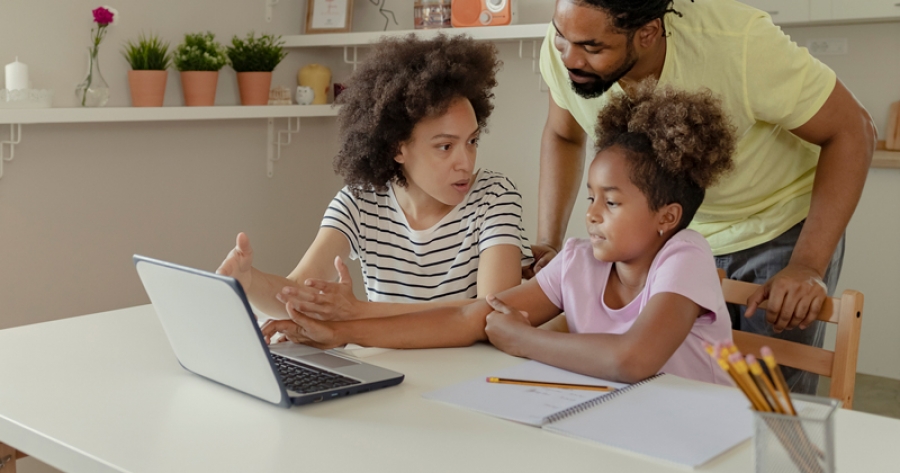Not all parents feel comfortable walking into a school; not all had good experiences themselves either, which can be a factor in why some haven’t been more involved. Remote learning takes some of this worry away from them and, when done well, can really strengthen the home-school relationship. The home-school link is critical, and should be nurtured from the day our learners start school aged 3 or 4. Children need to see that a parent or carer is involved and interested in school. Not all parents can volunteer on school trips, or even do the school run each day, but as often as possible schools need to give parents opportunities to get involved.
Primary schools are better at this on the whole, so secondary schools have always been looking for better ways to get the parents involved. My own MA dissertation looked at the differences between parental engagement between Year 6 and Year 7, and found that there are myriad of reasons why parents are often less involved in secondary education, with ease of access to teachers being one of those, and being uncomfortable in school another. Remote learning has broken down those barriers and given parents access to schools and teachers on their own terms.
Remote learning has made many schools think about how and what they share with parents. Apps such as Seesaw have come into their own, allowing parents, students and teachers to see the work at home that has been going on. Emailing has become more common, apps such as Class Charts or Satchel One / Show My Homework that share homework and messages have thrived, developing new features to cope with the demands.
Sharing examples of good work, offering praise, posting comments on Google Classroom or Microsoft Teams work completed by students… all of these things mean that parents are able to easily be more involved now than ever before. Previous to this, it was rarer for students to take books home to show their learning. Keeping up with these systems is critical: parents will stop using apps that are rarely used by schools. Likewise, if they are too frequently used, they will become a burden. Look for ones that are mobile-enabled, use low storage and data, and allow parents to select what posts they get and when. This is vastly preferable to those which constantly ping messages onto your phone, or those which don’t work well on mobile devices.
It is important that parents are ‘trained’ in the use of the specific apps that schools are using. It’s useful for schools to share how-to guides in paper form with screenshots, or even share videos of how to access the main platforms and apps used by a school. This will help parents access the relevant edtech, making them feel part of the learning. You might even consider seeking out masterclasses or webinars demonstrating these resources to send to parents. Offer this assistance face-to-face if the situation allows, or virtually at several times during a day / evening to help all parents and guardians gain full necessary access. Record these sessions so that parents can return to them if they are stuck at a later date. Give parents a contact in the school, someone who can talk them through setting up and using these systems so that they feel confident in what they are doing.
Remote learning should empower parents and guardians. The same screens that some people hide behind for less-than-positive exchanges online can also be a safety net for parents who are unsure of themselves in front of teachers (secondary ones in particular). Just as we have seen some students thrive with remote learning, so too have we seen some parents, and if we are heading toward a ‘new normal’, then I would love to see well-planned, remote parental engagement included as part of this.
![]() Looking for more Parental Engagement Apps? Check out 36 of the Best Parental Engagement Apps on our sister platform EdTech Impact.
Looking for more Parental Engagement Apps? Check out 36 of the Best Parental Engagement Apps on our sister platform EdTech Impact.


















